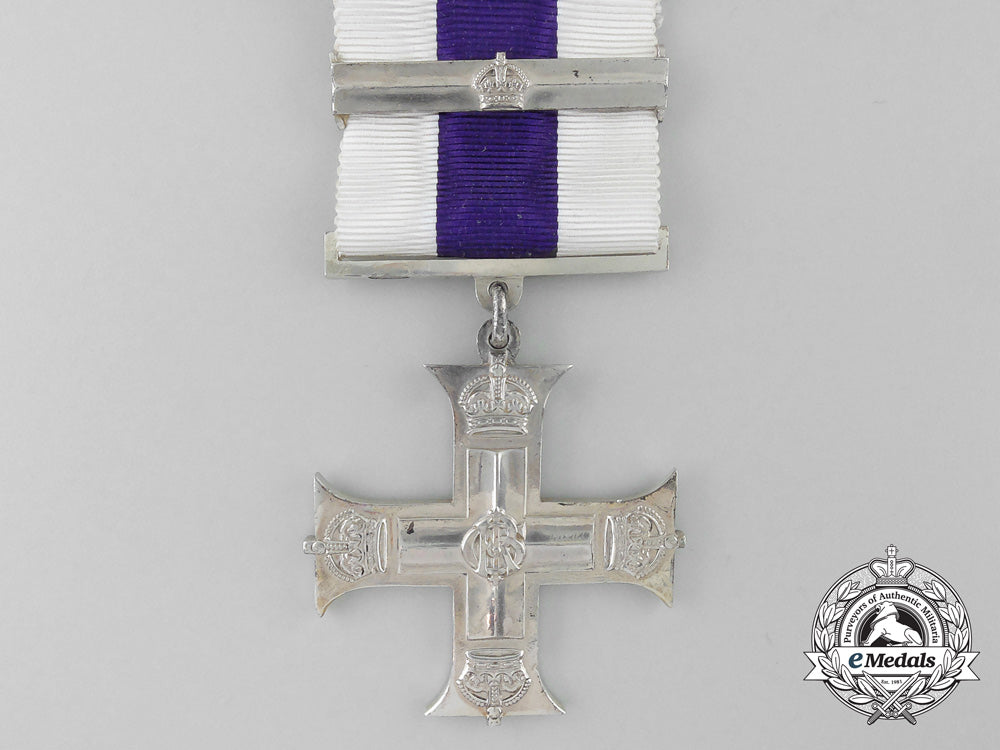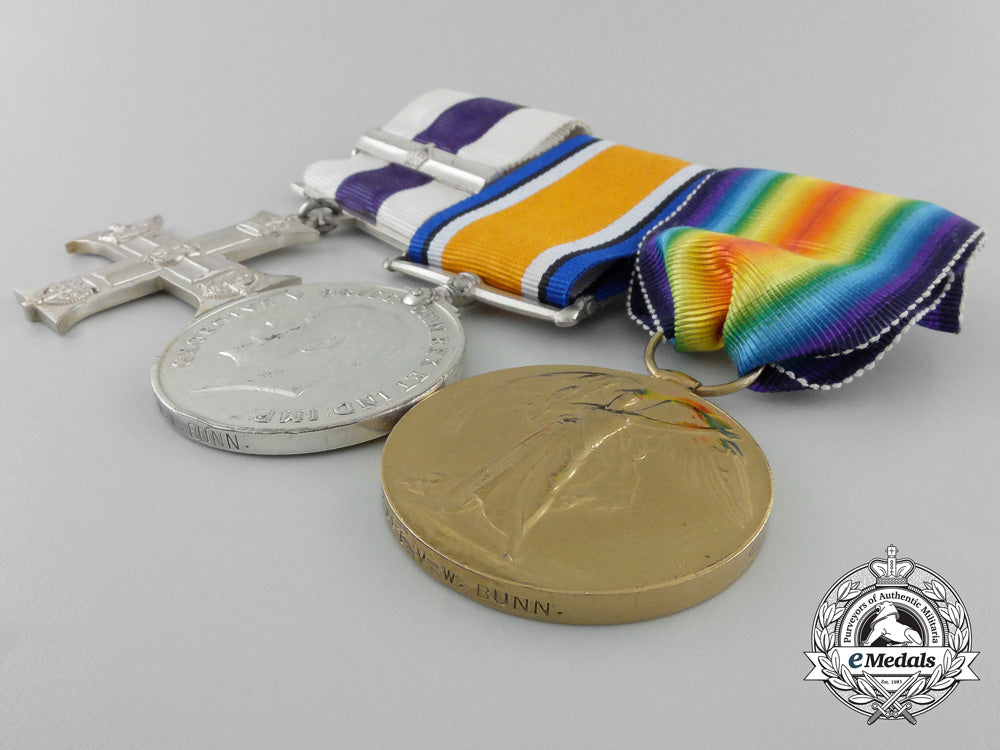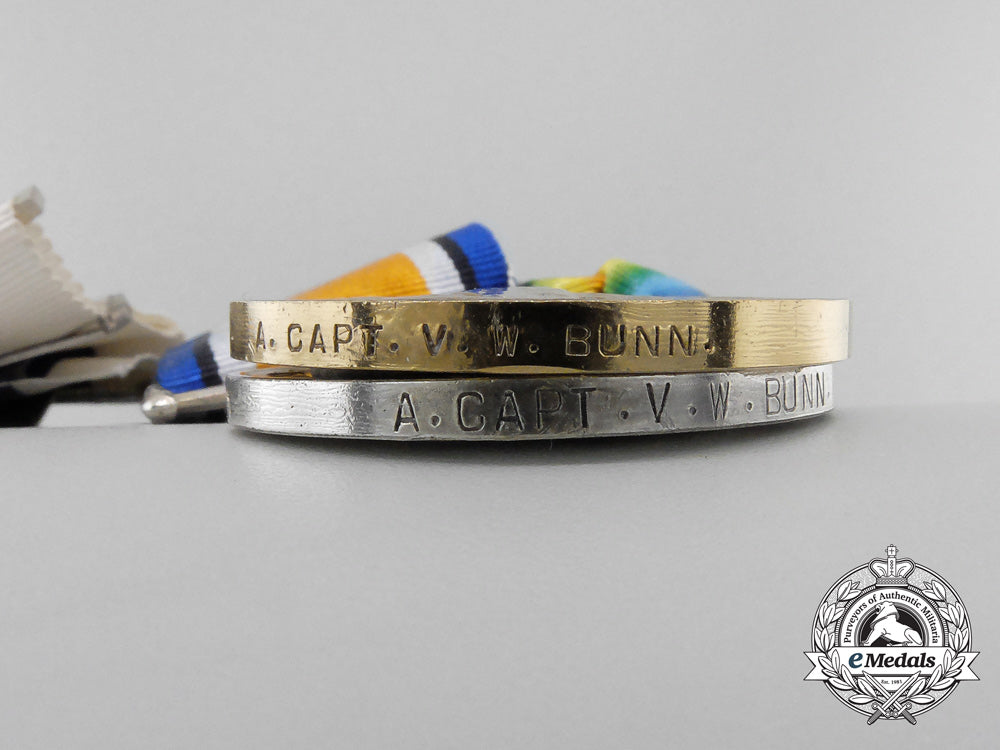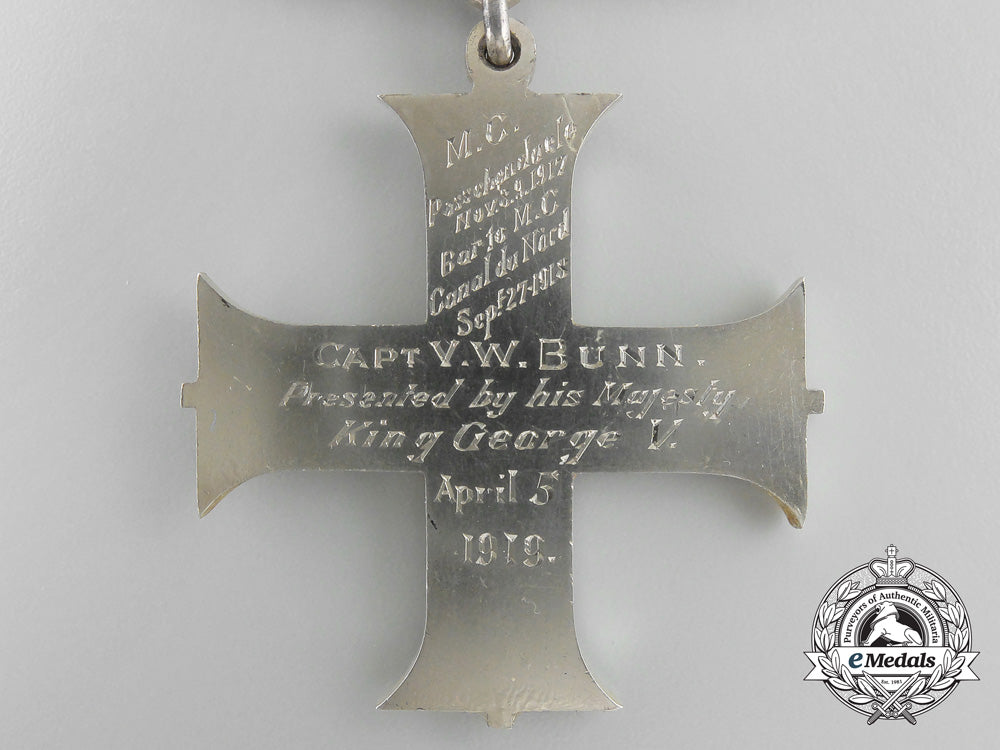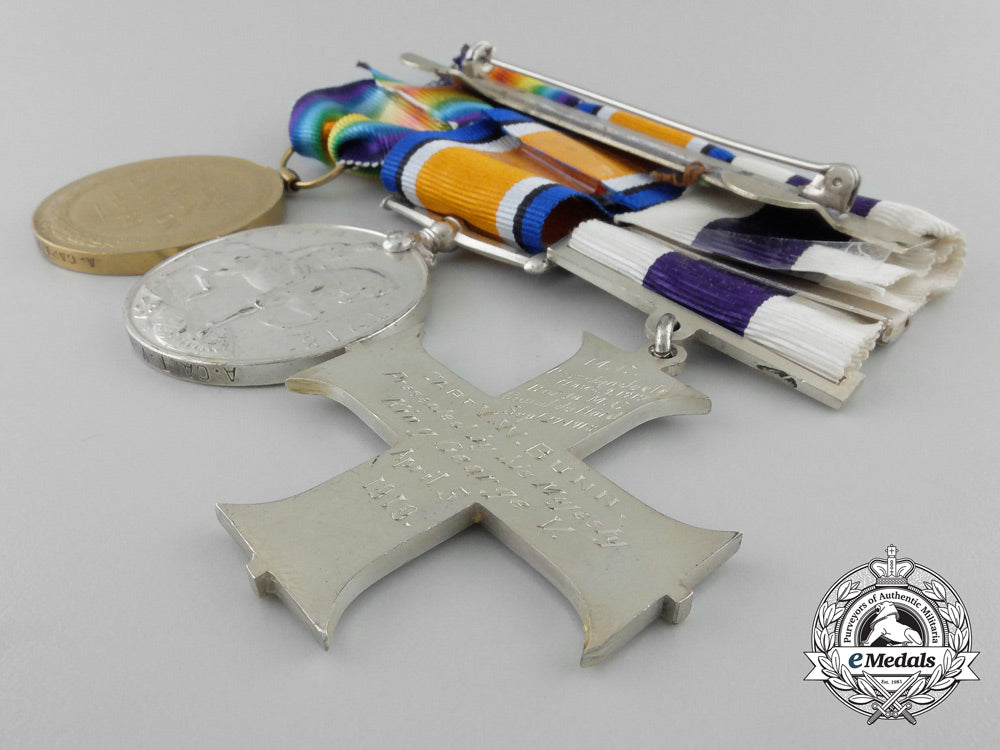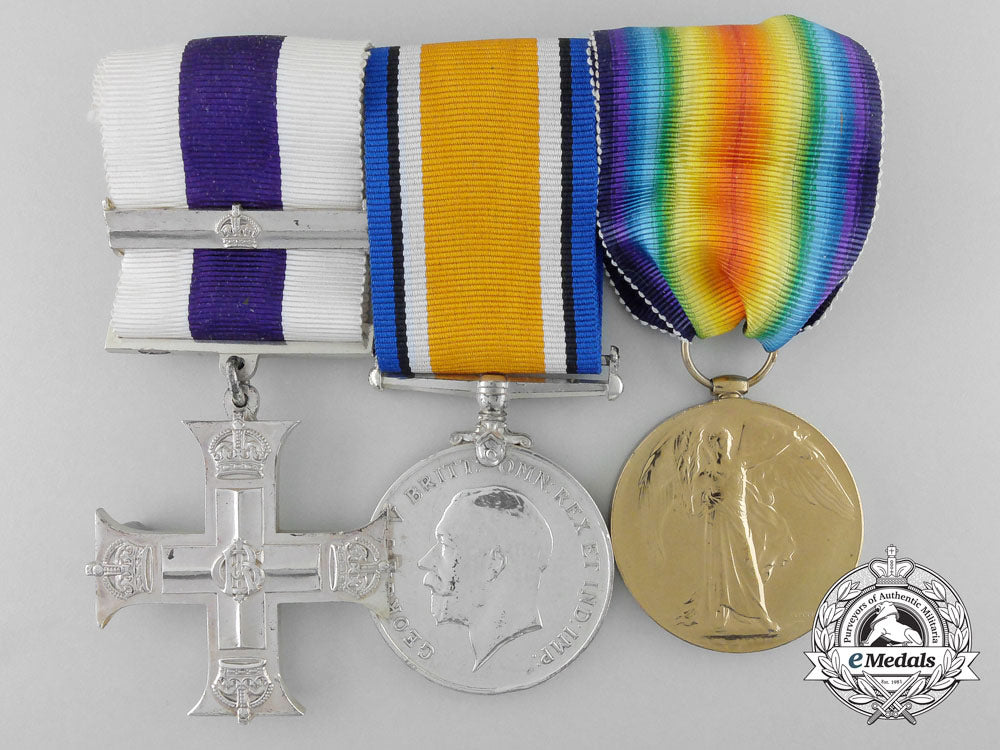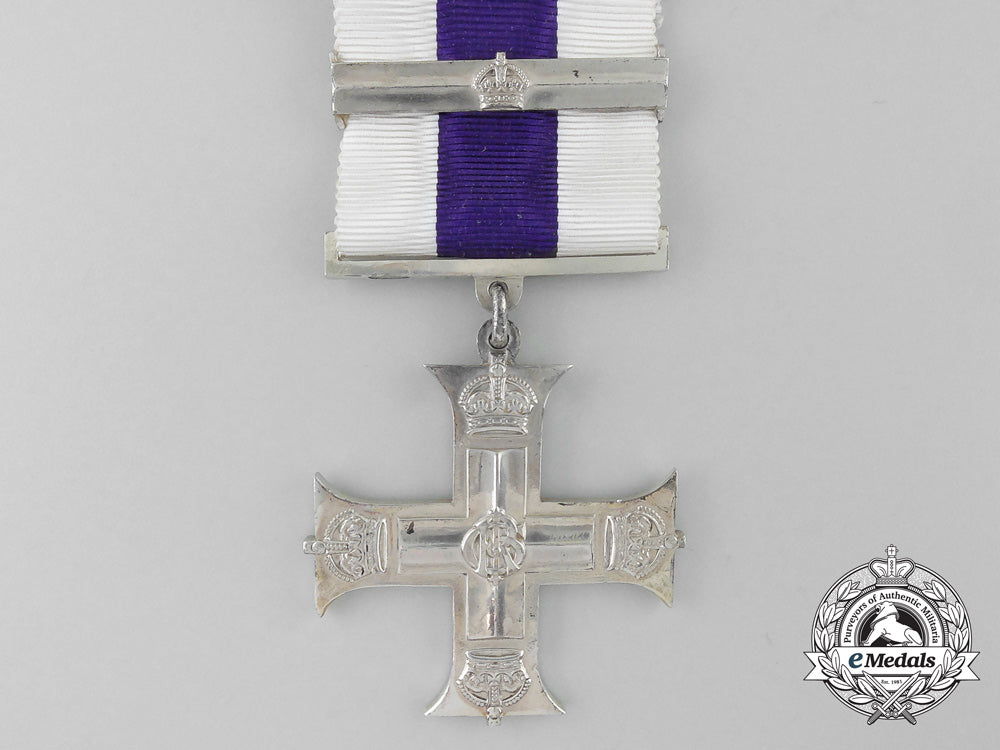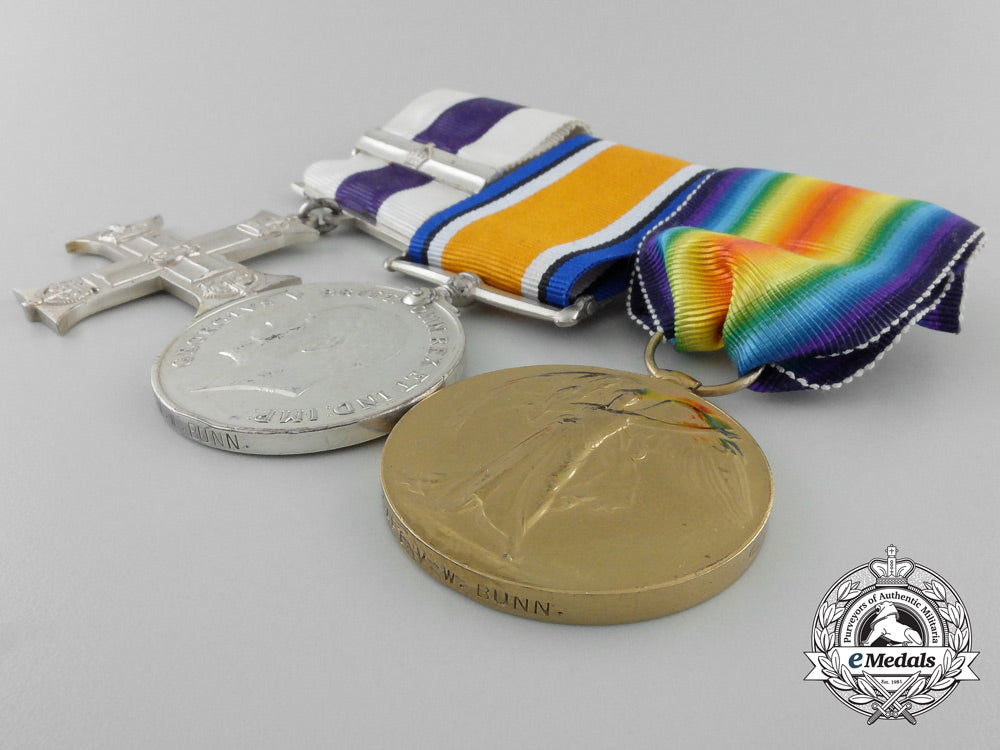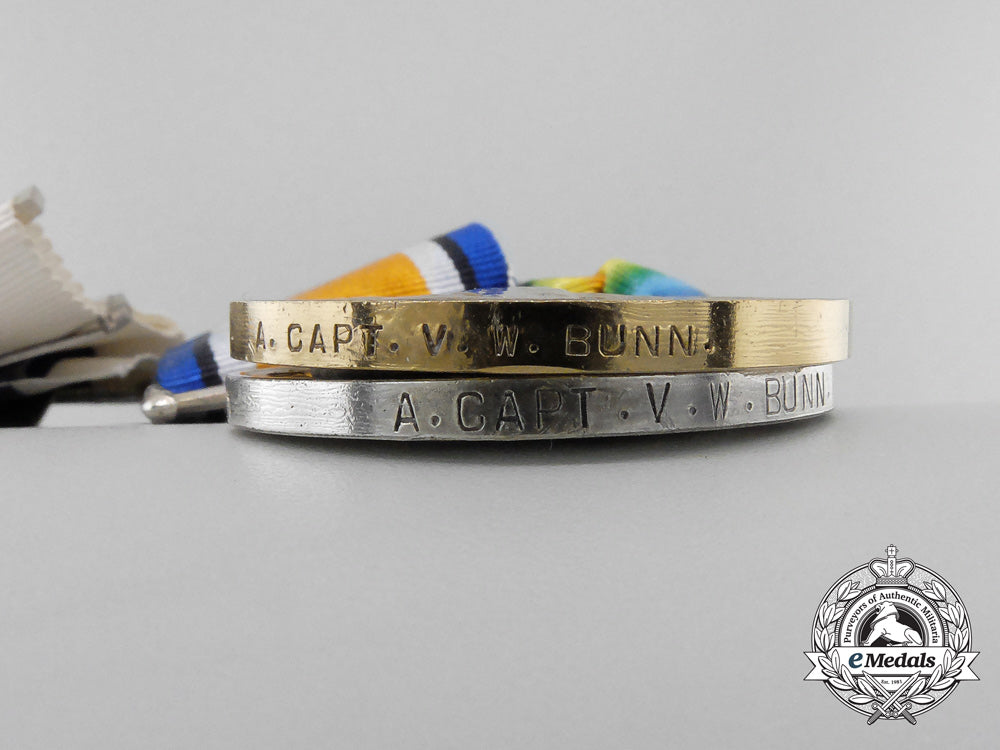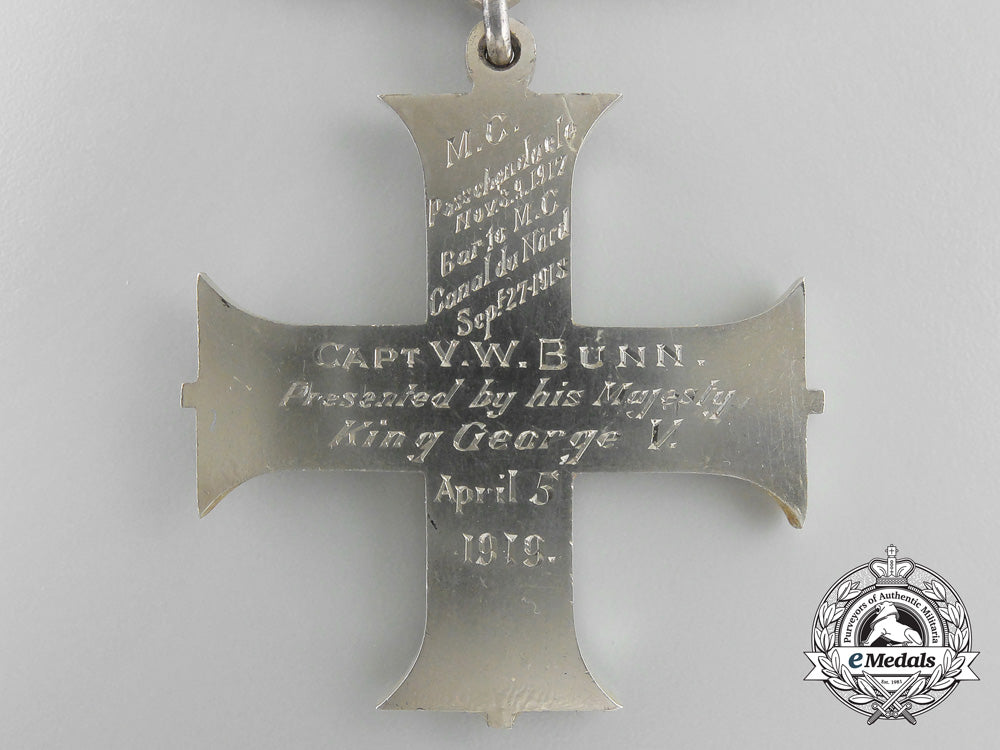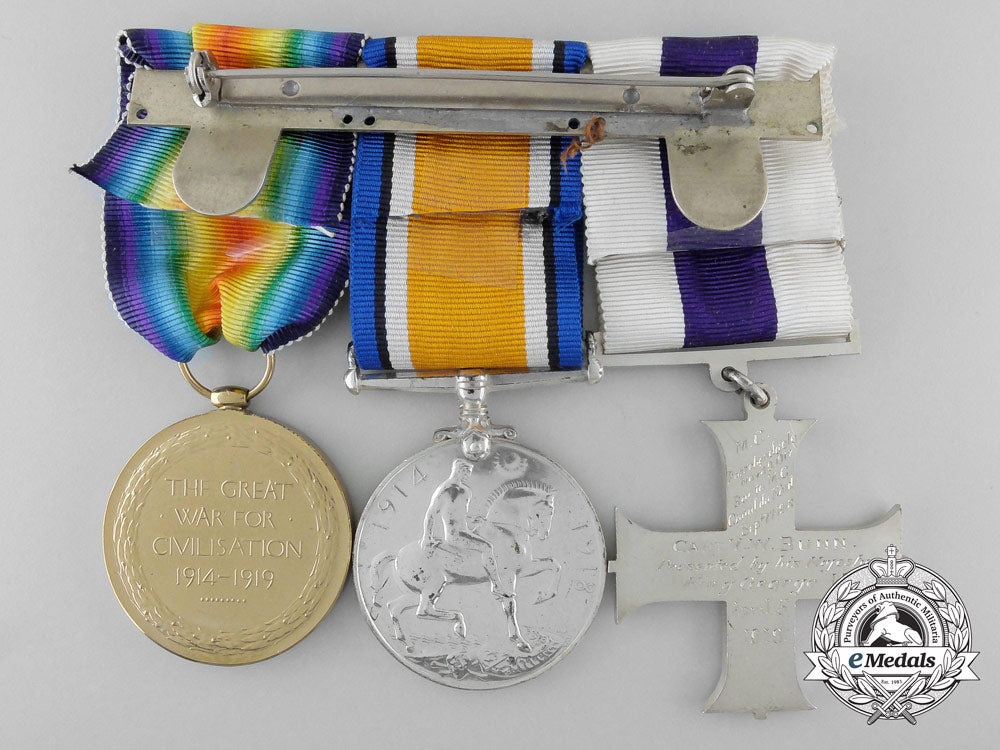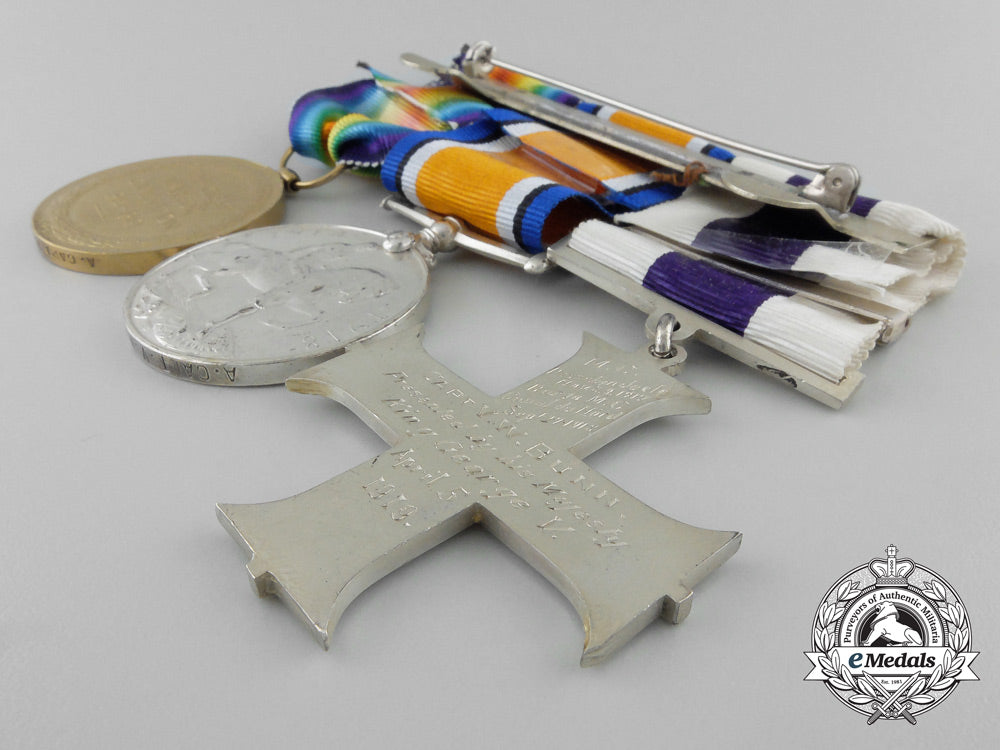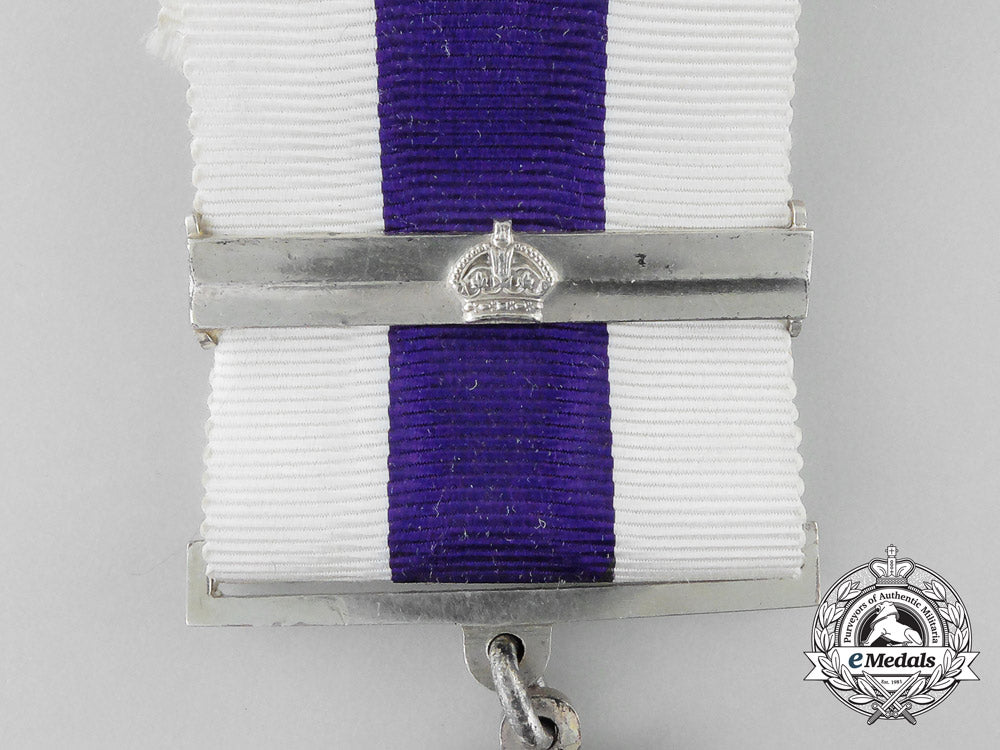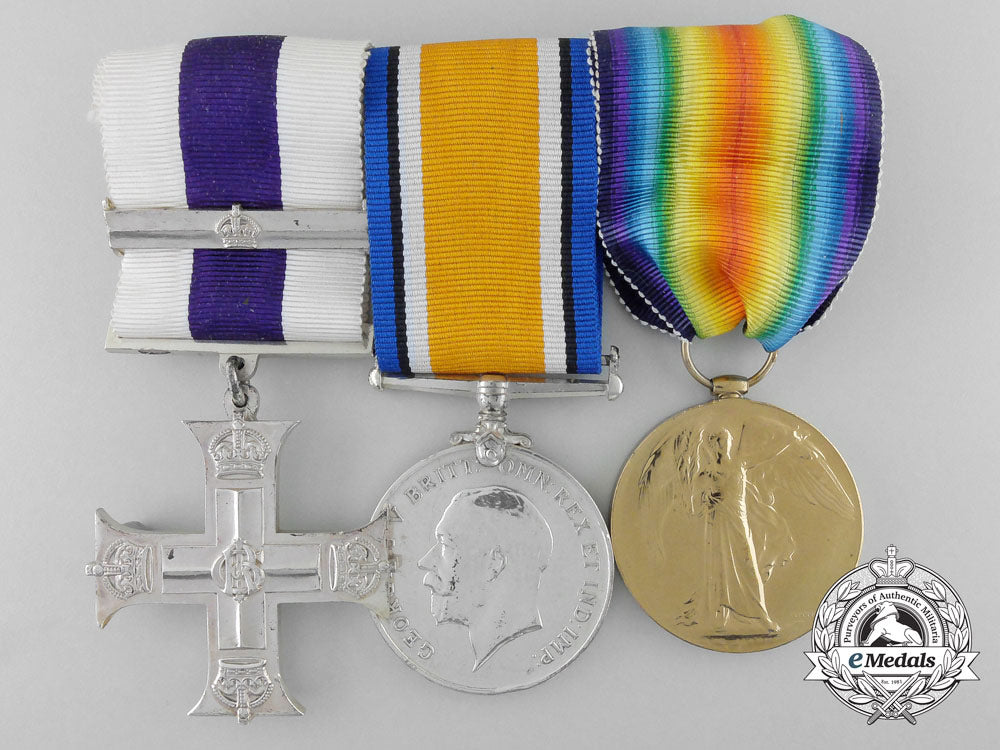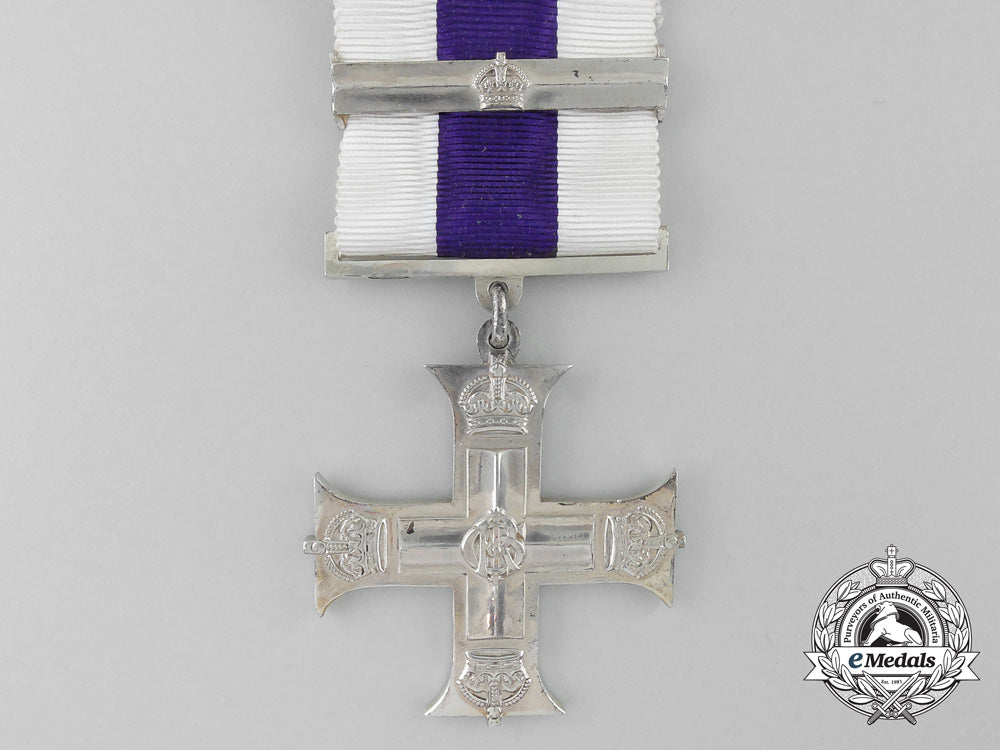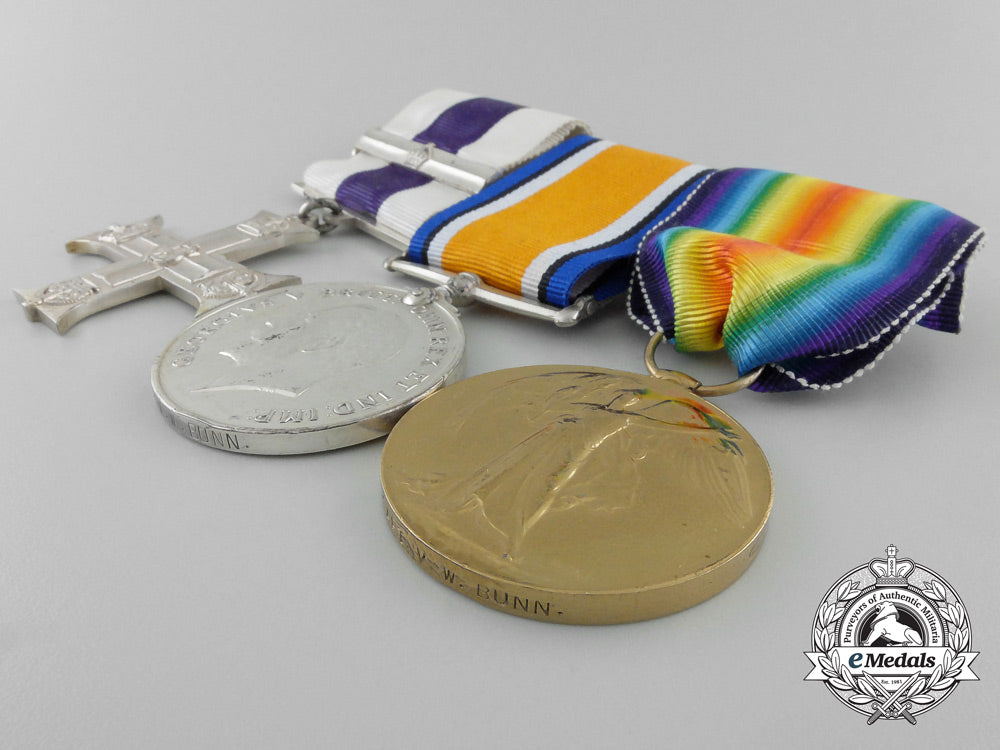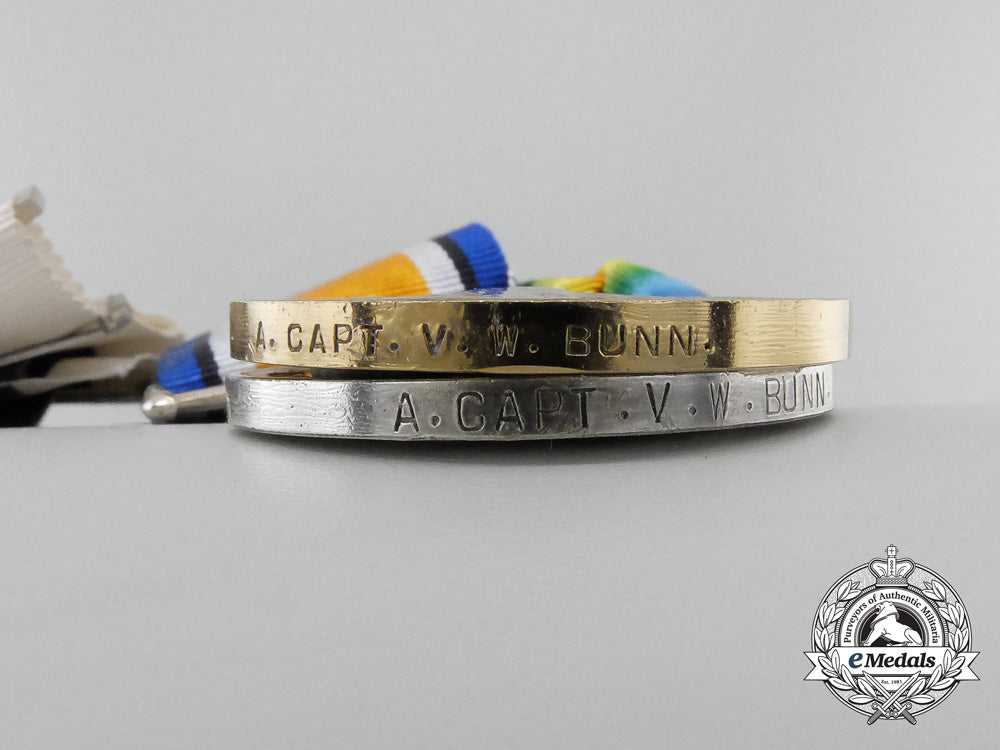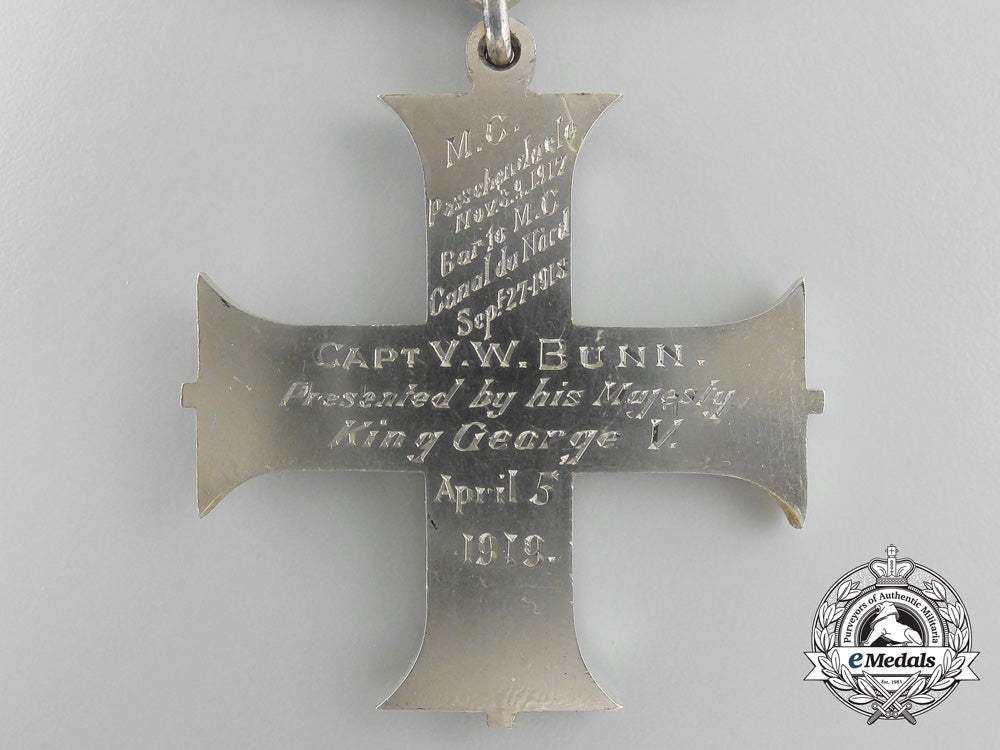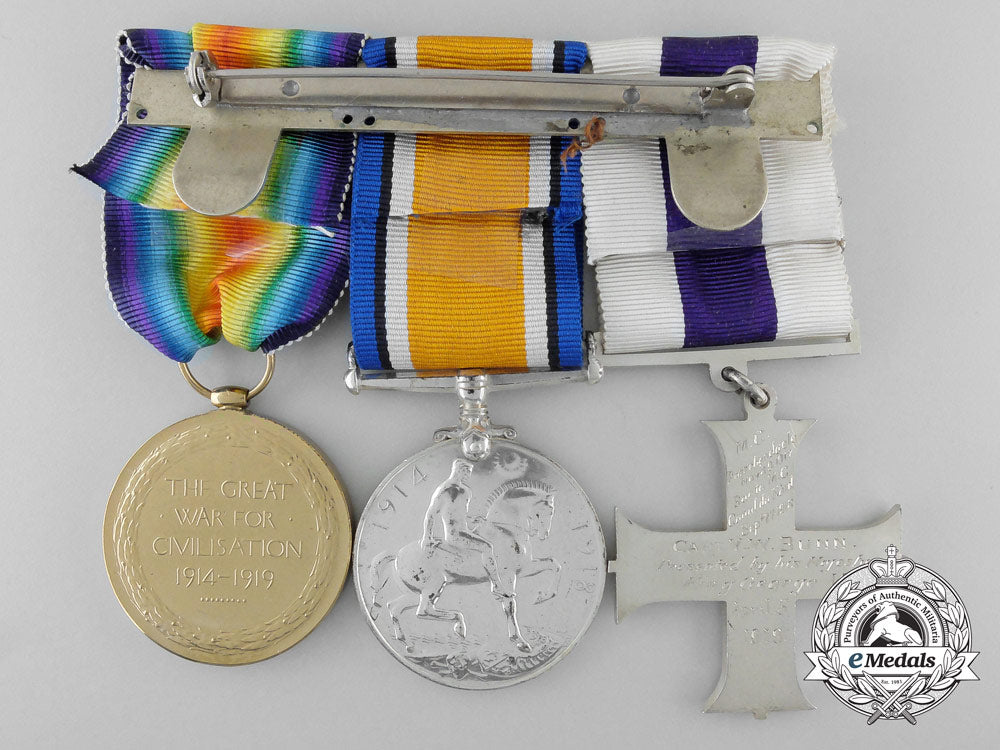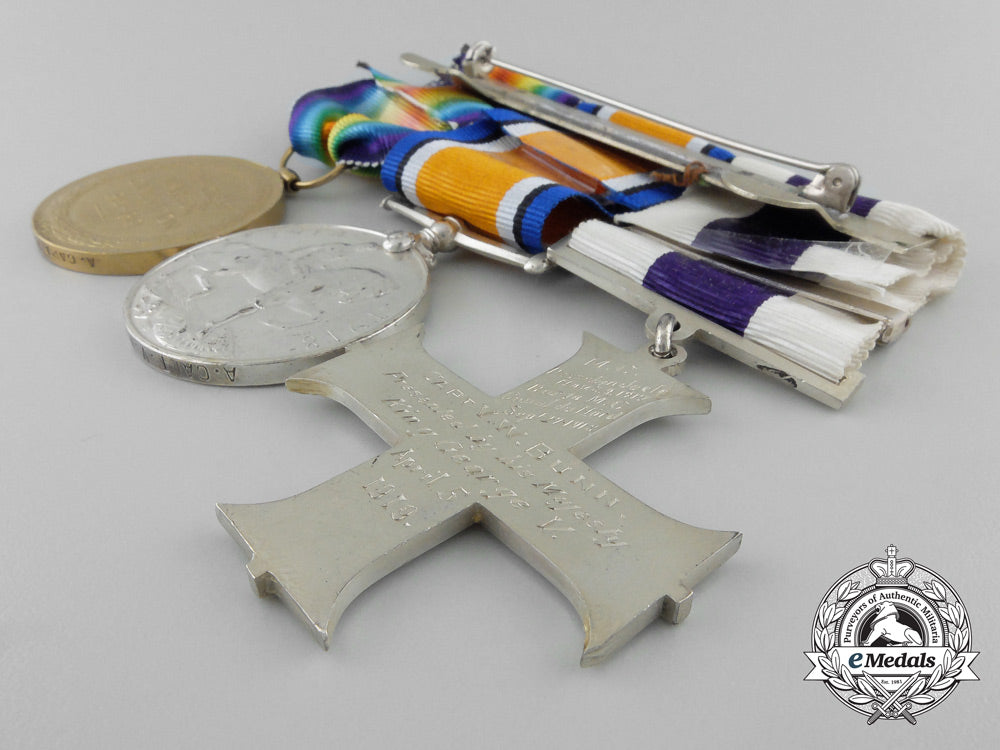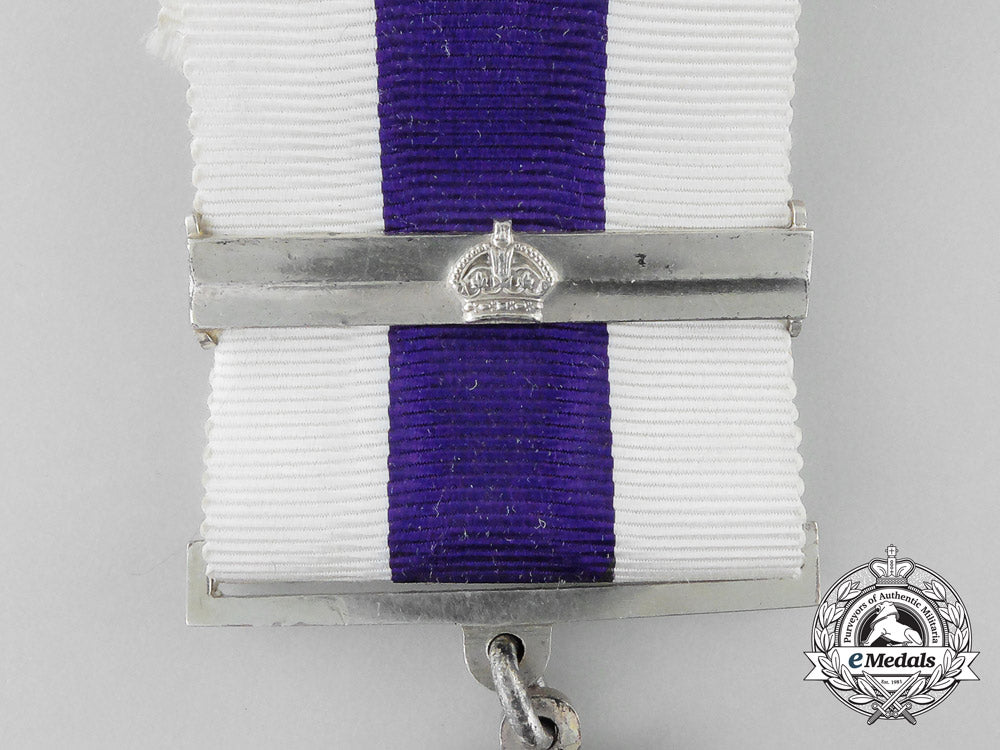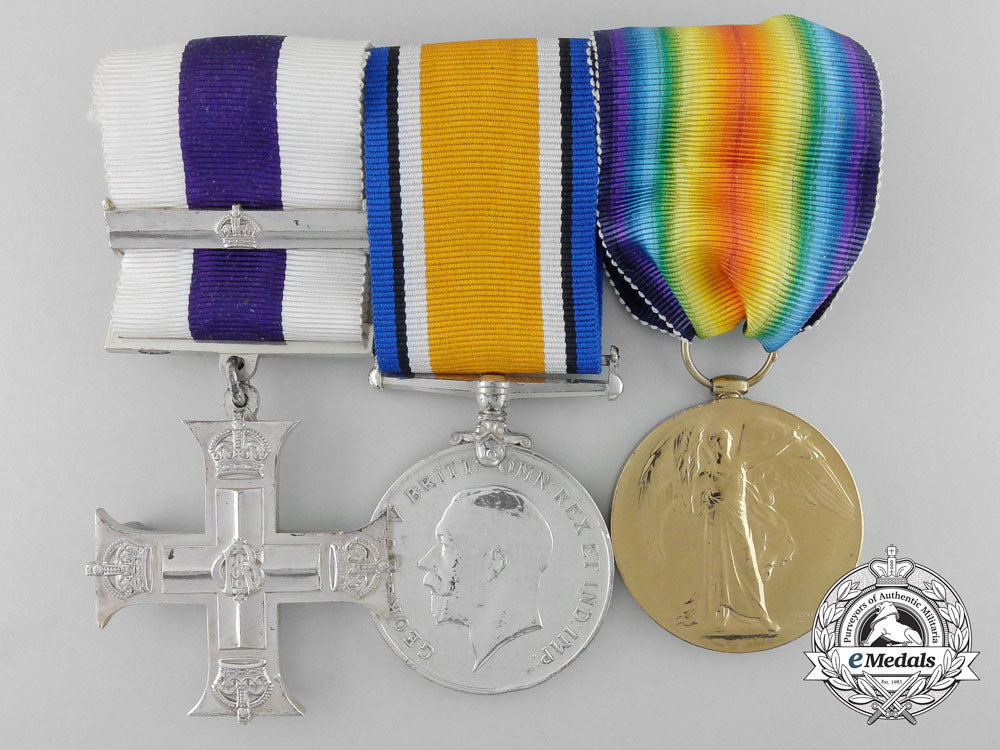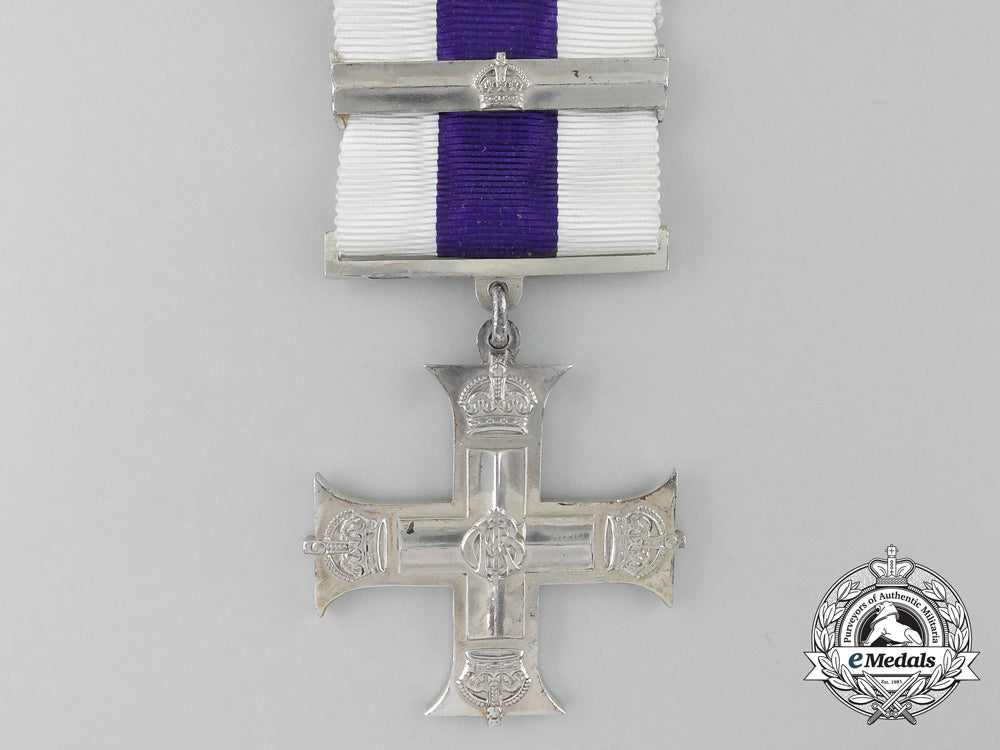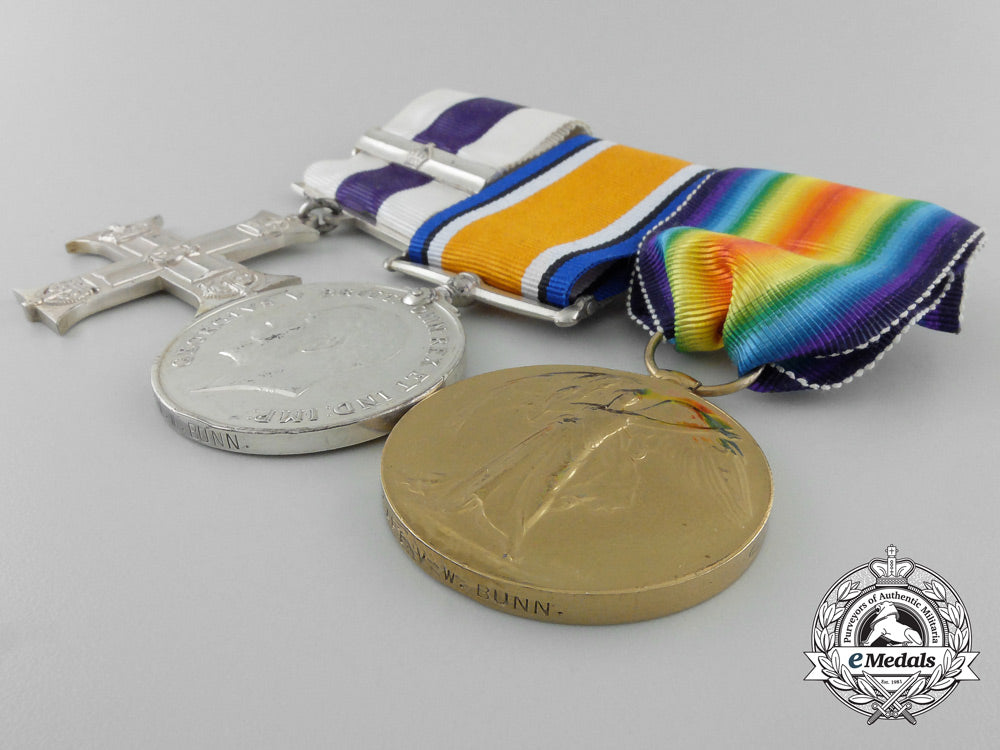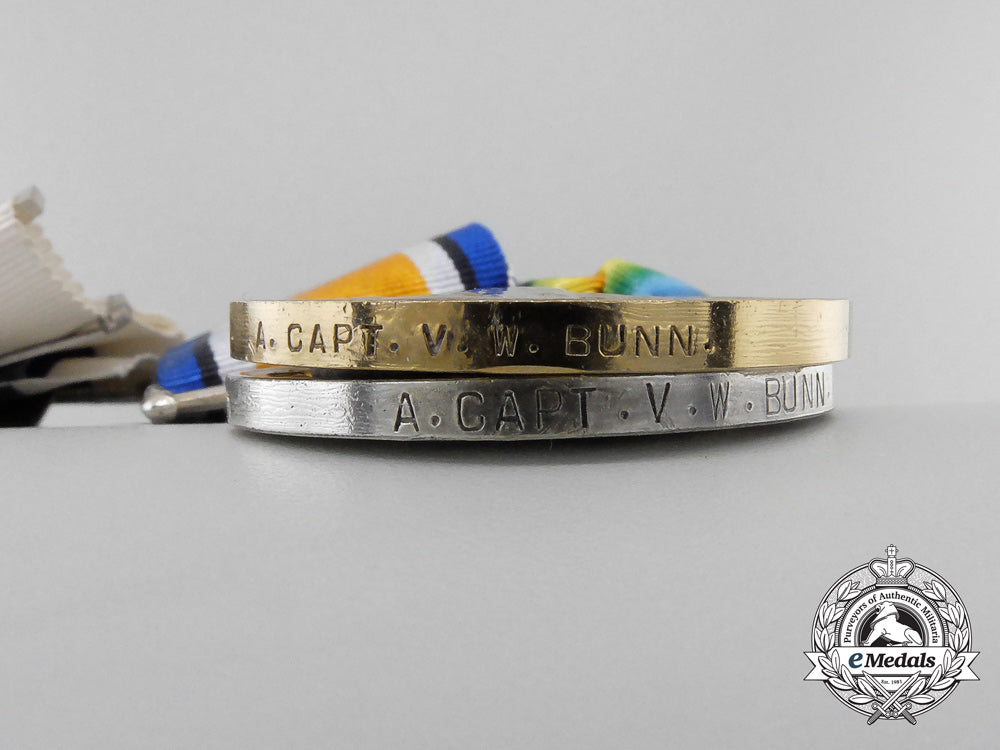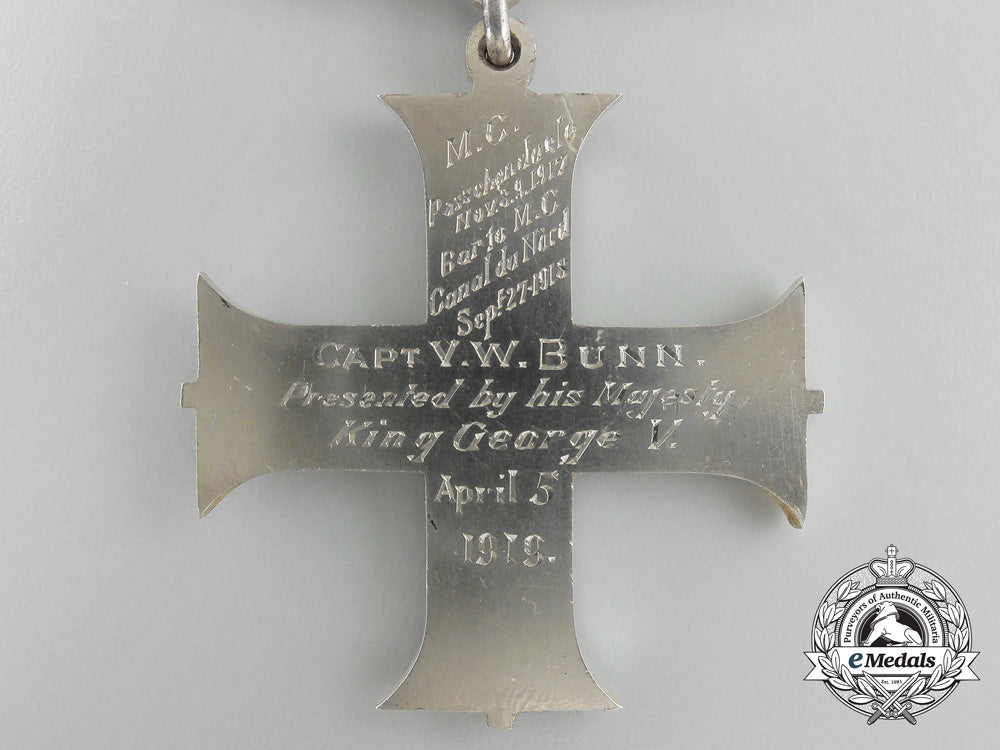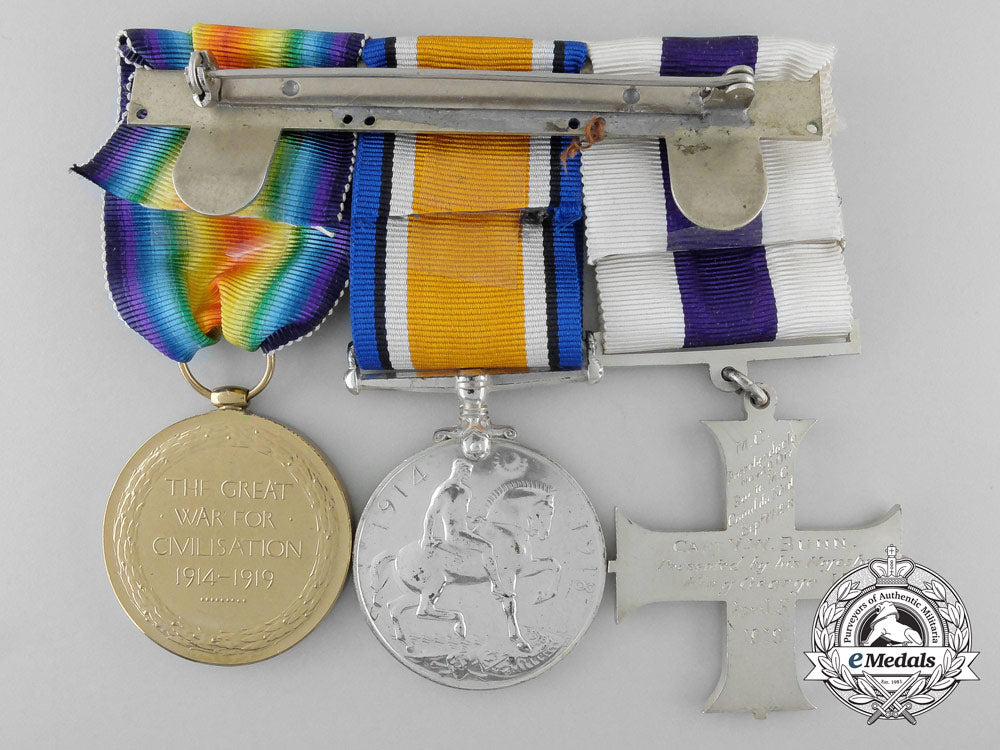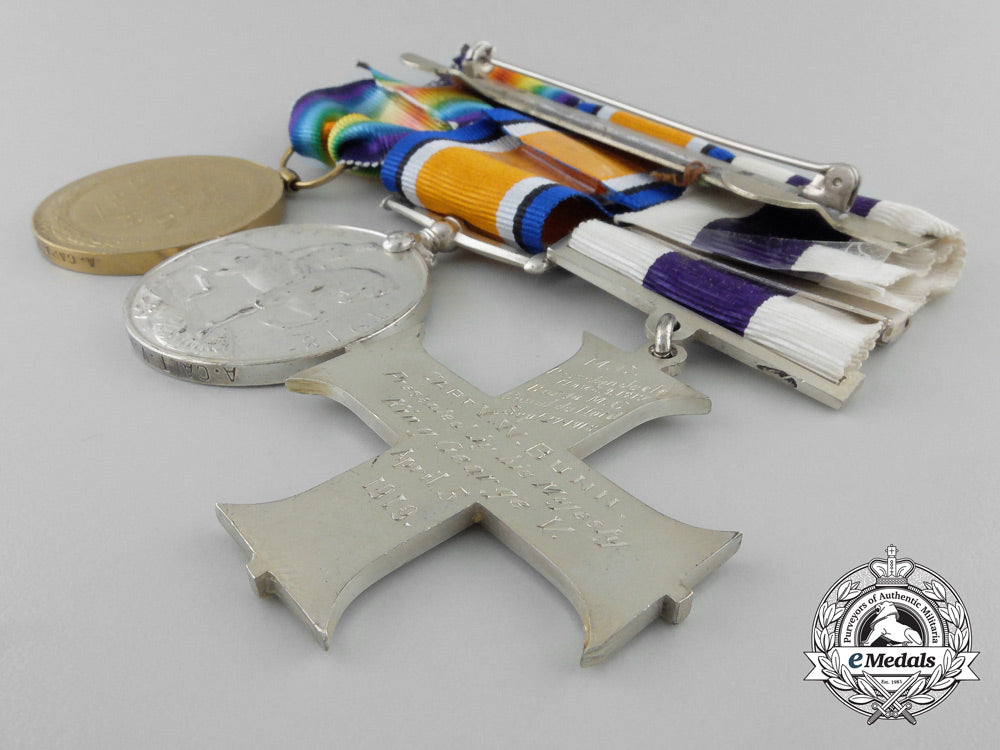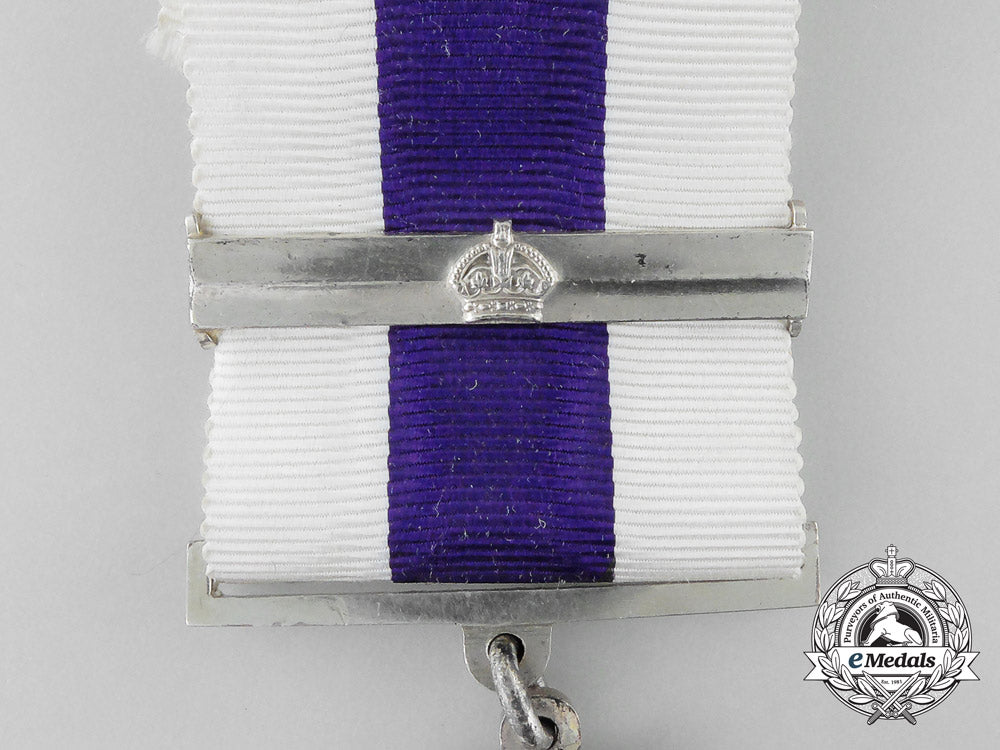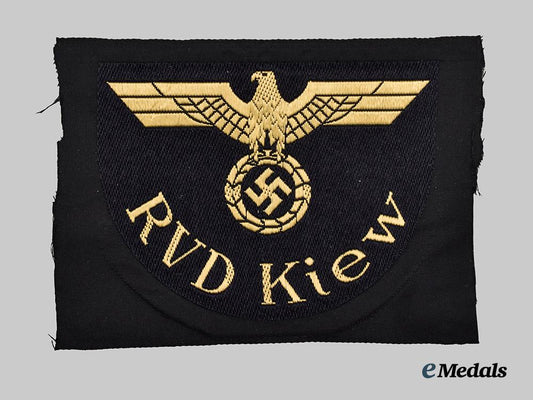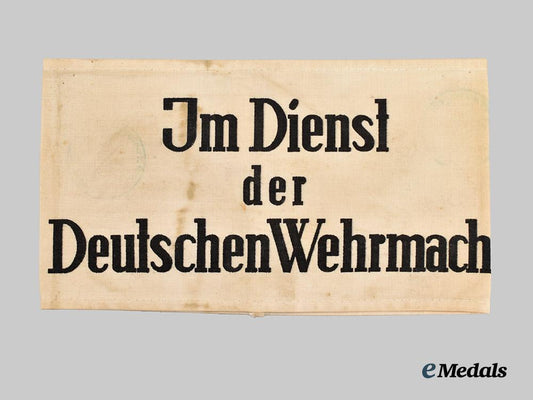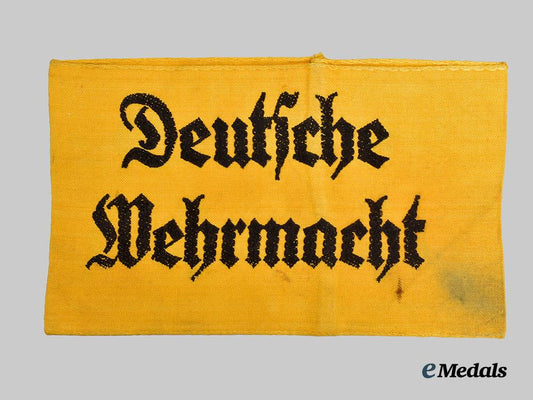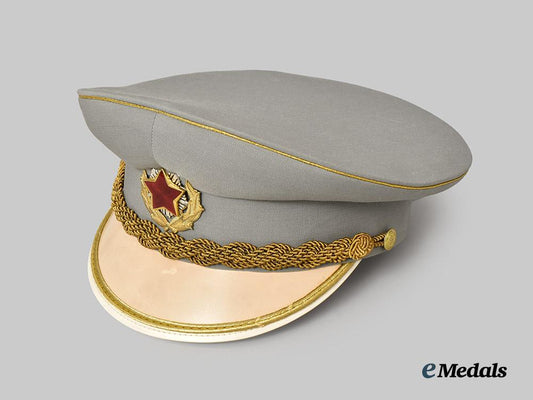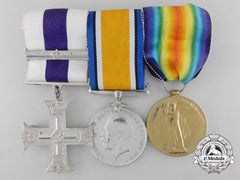Description
Military Cross (M.C. Passchendaele / Nov. 8.9. 1917 / Bar to M.C. / Canal du Nord / Sept. 27, 1918 / CAPT. V.W. BUNN. / Presented by his Majesty King George V. / April 5 1919.); British War Medal (A. CAPT. V.W.BUNN.); and Victory Medal (A. CAPT. V.W. BUNN.). Inscription is engraved on the reverse of the MC, the First World War pair are officially impressed. Mounted to a suspension, light contact, near extremely fine.
Footnote: Victor William Bunn was born on May 24, 1890 in Winnipeg, Manitoba, the son of John Robert Bunn and Vashti Elizabeth Bunn. He was the second of five children born to the couple: Charles (born 1886), Thomas (born 1892), Marguerite (born 1893) and John (born 1895). Their father, John Bunn, had just rejoined the Hudson Bay Company and was serving as a Clerk in the Lac La Pluie District when Victor was born. The family relocated to Rat Portage (later Kenora), Ontario by 1891. In 1893, John Bunn was in charge of the saleshop for the HBC, a position he held until 1901 when he went into business for himself. By 1906, the family had left Kenora and was living in Selkirk, Manitoba. Young Victor is documented as having had measles in his childhood and typhoid in 1897 and made a "good recovery" from both. Victor Bunn attended St. John's College in Winnipeg and became a Civil Engineer. He signed his Officers' Declaration Paper as a Lieutenant with the 107th Infantry Battalion "Winnipeg Battalion", on May 15, 1916 at Winnipeg, at the age of 25, naming his next-of-kin as his father, John R. Bunn of Winnipeg, stating that he belonged to an active militia, the 99th Mounted Rifles, that he was not married, that his religion was Church of England and that his trade was that of Civil Engineer. The Battalion was raised and mobilized in Winnipeg, Manitoba under the authority of G.O. 151, December 22, 1915. The Battalion sailed September 18, 1916 from Halifax, Nova Scotia, aboard the S.S. Olympic, under the command of Lieutenant-Colonel G. Campbell with a strength of 32 officers and 965 other ranks, arriving in Liverpool, England on the 25th. In England, the Battalion was re-designated the 107th Pioneer Battalion and was to serve in France in that capacity. He proceeded overseas for service in the French theatre, from Witley Camp on February 25, 1917, disembarking at Boulogne, France the following day. He was wounded but remained at duty, on August 15, 1917 and was to later take two leaves: ten days to Paris, France in October 1917 and fourteen days to Rome, Italy in February 1918. Lieutenant Victor William Bunn, 107th Infantry Battalion was awarded the Military Cross, the announcement appearing in the Third Supplement to the London Gazette 30530 of Friday, February 15, 1918, on Monday, February 18, 1918, page 2162. His citation appeared in the Third Supplement to the London Gazette 30801 of Tuesday, July 16, 1918, on Thursday, July 18, 1918, page 8479 and in the Canada Gazette of August 17, 1818, page 658 and reads as follows: "For conspicuous gallantry and devotion to duty. When in charge of a working party, which was heavily shelled, he displayed exceptional skill and courage in manoeuvring his men and keeping them together. He personally took two men who had been wounded to a " pill-box," and helped to dress their wounds. His example greatly inspired his men and enabled them to finish their task under very heavy hostile shell fire." When engineer battalions were formed in 1918, Bunn was appointed to the 3rd Battalion, Canadian Engineers. He was with this unit when he was admitted to No. 3 Canadian Field Ambulance on June 12, 1918, where he was diagnosed with "Impetigo" (bacterial infection of the surface of the skin, which is contagious and is caused by strains of both staph and strep bacteria, the symptoms including small blisters and dark or honey-colored crust that forms after the pustules burst), the doctor noting the "Contusions to his face" and after ten days' treatment, was discharged to duty on June 22nd. Lieutenant Victor William Bunn, M.C., 3rd Battalion, Canadian Engineers was awarded the First Bar to the Military Cross, the announcement appearing in the Second Supplement to the London Gazette 31219 of Friday, March 7, 1919, on Saturday, March 8, 1919, page 3234. His citation appeared in the Second Supplement to the London Gazette 31583 of Friday, October 3, 1919, on Saturday, October 4, 1919, page 12258 and in the Canada Gazette of November 15, 1919, page 5 Sup. and reads as follows: "For gallantry and devotion to duty in the construction of a pontoon and trestle bridge over the Canal du Nord and Agache river at Sains Marquion during the battle on 28th September, 1918. By his skill and energy he succeeded in getting bridging material forward under heavily shelled roads, and constructed three bridges for field guns and horse transport in three and a half hours. (M.C. gazetted 18th February, 1918.)". He is also documented as having been Mentioned in Despatches. Lieutenant Bunn was to be Acting Captain with the 3rd Battalion, Canadian Engineers, effective September 5, 1918, the announcement appearing in the Supplement to the London Gazette 31341 of Tuesday, May 13, 1919, on Thursday, May 15, 1919, page 6100. Captain Bunn was transferred to the 2nd Battalion, Canadian Engineers in early March 1919 and proceeded to England on March 27, 1919. In his Medical History of an Invalid, dated March 31, 1919 at Bramshott, Captain Bunn was getting over a bout of Influenza, the symptoms of which had been traced back as far as seven and a half weeks earlier, while in Belgium on February 8th. The doctor noted that he had "DAH" (Disordered Action of the Heart, otherwise known as Soldier's Heart or Effort Syndrome, and was thought to result from a combination of over exertion, mental stress and fatigue), with impaired function of the heart due to the Influenza. However, by the date of the report, Bunn had no enlargement of the heart, his pulse was at rest, with no symptoms of heart disease. It was also noted that he had had his nose fractured just prior to enlistment, the doctor stating that Bunn "now complains of some obstruction in the left nostril", but that he was "breathing clear when the other nostril is stopped" and had "never had any trouble with (his) heart until after having Influenza". He was given a clean bill of health and declared "Fit for General Service". At the Investiture of King George V in Buckingham Palace on April 17, 1919, Bunn was decorated with the Bar to his Military Cross. He was posted to F Wing, Canadian Concentration Camp at Kinmel Park, North Wales and was struck off strength to Canada, embarking England aboard H.M.T.S. Empress of Britain on April 26, 1919. Bunn was discharged upon demobilization on May 9, 1919, his Discharge Certificate dated January 13, 1920 at Ottawa, credited with having served in Canada, England and France, entitled to wear the War Service Badge, Class "A", number 185680. In his Will, dated September 12, 1916 at Camp Hughes in Manitoba, he bequeathed his real estate and his personal estate to his mother, Mrs. Vashti Bunn of Winnipeg, but of course it was never executed. Two of his brothers, Charles Robert Randolph Bunn and Thomas Drake Bunn also served during the First World War. His older brother, Captain Charles Bunn was born on October 11, 1886 in Winnipeg and signed his Officers' Declaration Paper on August 1, 1916 at the Army Medical Corps No. 10 Training Depot at Camp Hughes, stating that he had no previous military service, that he was Married and that his occupation was that of Surgeon and Physician. His younger brother, Sergeant Thomas Bunn (622062) was born on February 24, 1892 in Kenora and signed his Attestation Paper with the 44th Infantry Battalion on January 1, 1915 in Winnipeg, stating that he had no previous military service, that he was not married and that his trade was that of Drug Clerk. After his discharge from military service, Victor Bunn worked as a Mining Engineer. Upon the outbreak of the Second World War, he offered his services again and was officially posted to the 2nd Canadian Pioneer Battalion, Royal Canadian Engineers. He went overseas again with the position of being second-in-command of this unit. When he returned, he worked for the United States Army on the construction of the Alaskan Highway. Victor Bunn died suddenly on March 11, 1944 at the age of 53. He is buried in St. John's Cemetery in Winnipeg.


